Photographs: Courtesy, CarDekho Surajeet Das Gupta in New Delhi
After over a year of bitter battle with big auto makers, Bajaj Auto Managing Director Rajiv Bajaj achieved a partial victory a few weeks ago, when the government permitted quadricycles' entry into the country's automobile space for commercial use.
In a candid interview with Surajeet Das Gupta, Bajaj talks about the reasons for companies like Maruti, Tata Motors and TVS to fear his company's entry and why they have come together to "deprive consumers a cheaper, safer and low-emission personal vehicle".
High emissions and growing concerns over road safety are manifestation of speed, which leads to overweight cars, having large engines, guzzling more petrol, emitting more carbon dioxide and being involved in more accidents, he says, adding that his quadricycle has found a way to resolve these concerns. Edited excerpts:
Maruti Suzuki Chairman R C Bhargava has said he does not have a problem with quadricycles being allowed for commercial use but expressed reservations about those as personal vehicles. Is that fair?
Bhargava says he has no problem with quadricycles being used as taxis because that won't affect Maruti Suzuki. If you travel on a quadricycle as a passenger, that's okay; but if you own one, you cannot travel because the same vehicle becomes unsafe.
That is a selfish point of view and has nothing to do with the society's good. If it was about concern over safety, he should have been against quadricycles' use as both commercial and personal vehicles.
...
Why Maruti, Tata Motors, TVS fear Bajaj now
Image: Rajiv Bajaj, MD & CEO of Bajaj Auto.Photographs: Courtesy, Bajaj Auto
Bhargava has also said that a quadricycle emits four times more carbon dioxide than a car if the same driving cycle is taken (same speed). And, you say it has lower emission than passenger cars. What is the reality?
It is a flawed argument. There is something called the Indian driving cycle, which replicates the way Indians drive on roads based on speeds and time. Obviously, cars go faster and their cycle for the test is different.
Bhargava is saying that if a quadricycle is tested on the basis of European quadricycle driving standards, it will emit 60 grammes of carbon dioxide per kilometre, but if you test it according to car driving cycle, it will emit more. But why should I test it as a car?
Cars have speeds of 150 km per hour and an average speed of 70 kmph. My four-wheeler will be driven at 30-50 kmph on an average, with a maximum speed of 70.
If I take Mr Bhargava's Maruti car and put it on a car cycle of Europe, where roads are bigger and speeds are higher, let's see what emission numbers he gets. Just because quadricycles have four wheels, he wants to put it on a car cycle. It should not matter whether I put in four wheels or 10 as long as my maximum speed is half that of a car.
Are you saying the attack on quadricycles is unfair?
In three-wheelers, there is no restriction on weight. We have 500-kg three-wheelers in the country but someone might come up with a 1,000-kg one, which will be unsafe and lead to many accidents.
It could give a speed of over 100 km an hour but would not have to meet emission standards or pass tests, because there are three wheels. But, if I put in an additional wheel, all the problems start.
...
Why Maruti, Tata Motors, TVS fear Bajaj now
Photographs: Tanushree Punwani/Reuters
Do you think limiting quadricycles to commercial use is right?
I don't understand why it should not be allowed as a personal vehicle. What Bhargava wants to say is, if you now have a two-wheeler and can afford only a quadricycle, you can only buy a Maruti.
But there are millions of Indians who cannot afford a Maruti, with its running costs and mileage of 18 km a litre and not-so-cheap spare parts. A labourer in my factory who gets Rs 3-4 lakh a year cannot afford a Maruti. But he will get married and have kids... why can't he buy a quadricycle, which is affordable and safer than a two-wheeler.
How is it okay to use it in Europe, Indonesia, Sri Lanka, Kenya, and Colombia as a personal vehicle but not in India?
Why is it that Mr Bhargava does not oppose the use of three-wheelers as personal vehicles, which is allowed. He will not, because he knows there is a stigma attached to using an autorickshaw as a personal vehicle, so a large number will not buy it.
You have faced strong opposition from other auto makers, too, on quadricycles being allowed in India, especially on the issue of safety and emission. There seems to be a common ground against you among car companies.
We faced no objection at the Society of Indian Automobile Manufacturers (Siam) from Hyundai, Ford, GM, Toyota, Honda and the German car makers.
They were clear that they were not in the three-wheeler business with an additional wheel - it's not their business. Mahindra & Mahindra supported us and even tried to get a consensus among members, because they saw it as an opportunity.
Three companies are battling against us. On the one side are TVS and Tata Motors. They, too, want to get into this space and are afraid Bajaj will get ahead. They want to delay the process, so that approval comes in two or three years, by when they would be ready.
It's just about commercial interest, not emission or safety. The Tata Nano weighs 650 kg but doesn't deliver the benefits we do with a weight of 400 kg. So, why should they be given approval?
They wanted approval for 650-kg quadricycles. It is a story of sour grapes. They are not ready. My question to them is: Who stopped you from developing it? Were you not aware that such vehicles were permitted in other countries? I have taken a risk with 250 people on this for five years. I have put up a plant in Aurangabad.
On the second side is Maruti. It has a brand problem. It is stuck in the small-car business. If one has more than Rs 5 lakh in pocket, one does not buy a Maruti. It's Toyota, Volkswagen, Honda or GM one goes for - not an SX4 or a Kizashi.
Maruti already has five companies pressing it from above; now, if somebody looks to squeeze it from below, it gets sandwiched. Its reasons to oppose us, again, is commercial, and not technical.
...
Why Maruti, Tata Motors, TVS fear Bajaj now
Image: Bajaj's Managing Director Rajiv Bajaj is seen through the windows of RE60 in New Delhi.Photographs: B Mathur/Reuters
Currently autorickshaws cost Rs 1.2 lakh, while the Nano costs Rs 1.7 lakh. Does this mean you will have to price your new product below the Nano - to drive volumes if quadricycles are allowed as personal vehicles?
Price is not an issue, what is important is the monthly ownership cost. While equated monthly instalments (EMIs) account for a third of the monthly cost, the rest is the running cost of fuel and maintenance.
The Nano has failed because though it has attacked the EMI issue, it doesn't offer anything more than a Maruti in terms of mileage or maintenance costs. According to our rough calculation, the monthly cost of ownership for a Maruti car is Rs 8,000 and that for a Nano is Rs 7,000.
The only plus is that a person makes a one-time saving of Rs 50,000 on the price of the car, while the downside is that he gets a smaller car, with less power. In our case, monthly cost of ownership will come to Rs 4,000-5,000 because mileage is better and maintenance is low. So, I don't think the Nano's price is relevant for me.
What is relevant is the price of the Alto, at Rs 2.5-2.7 lakh. That is my benchmark and I have to be below that price. I will not be able to sell if I price my vehicle at their level. So my price has to be between Rs 1.25 lakh of an autorickshaw and Rs 2.5 lakh of an Alto.
So, do you mean that even if you were to price your quadricycle at, say, Rs 1.7 lakh (similar to that of the Nano), it would make no difference?
Even if I price it at Rs 1.7 lakh, I don't think there is any issue. Why is the Nano not considered for replacing a three-wheeler or a taxi? One reason, of course, is the mileage - the owner won't make any money, as he has to charge the same or a little more; otherwise a passenger will travel in a three-wheeler.
The second is maintenance, and third is manoeuvrability. The width of our RE60 is 1,400 mm - the same as that of three-wheelers. After all, it has to go in the same congested bylanes where autorickshaws go. These are the places where the Nano cannot go.
We were under pressure to increase the width by 100 mm and get an additional passenger to sit; that would have been a trap.
...
Why Maruti, Tata Motors, TVS fear Bajaj now
Image: Bajaj's first-ever four-wheeled vehicle RE60.Photographs: B Mathur/Reuters
How big is the market for quadricycles in India?
It is impossible to predict. We don't know the customer opinion and how various state governments will respond. On the other hand, Delhi Chief Minister Sheila Dikshit has said she would like to replace all the 70,000 autorickshaws in Delhi. If every state takes this view, I will hit a jackpot.
How do you think quadricycles will be able to resolve the issue of emission and safety in India?
We have to look at the evolution of the car industry. After World War-I, Hitler said we needed a small people's car, and Volkswagen was born; a similar thing happened in Japan. The weight of the cars then used to be 350 kg on an average and top speed 40-60 kmph.
Then, people wanted cars to go faster. But, as they went faster, accidents happened and safety became a big concern in the '70s and '80s. So, seat belts, air bags, crumple tests, front and angular crash tests, besides the need to reinforce doors, came in - the car became heavier.
The point to ponder is, while everything else is becoming lighter or slimmer - from cameras, TVs and PCs to phones - the weight of the smallest car has doubled over the past fifty years. So, as cars were becoming heavier, people wanted more speed and engines became bigger. So, today, they guzzle a lot of petrol and emit a lot of carbon dioxide.
The response of the world has been to look at hybrid or electric cars to reduce emission. But the cost of technology is high. The consumers cannot pay for that and governments are broke so they cannot subsidise it. For instance, California mandated from 1991 that two per cent of the cars sold should to be electric and hybrid, but that was a failure.
One way is to wait for the electric car to come one day. But our essential contention is that if you want to solve the emission problem, it is not the engine you have to attack, but the rest of the vehicle. So, for instance, if we want a smaller engine, this could raise safety issues.
Unwind the clock and you will see that the safety issue comes in the first place, because you want cars to go faster.
Therefore, we have said our four-wheeler will not go faster than 70 kmph and will have half the emission of a car. We have taken it back 50 years and our motto is going back to the future. After all, the average speed in city traffic around the world varies from 30 to 50 kmph.
We want our four-wheeler to drive comfortably at 30-50 kmph, with a top speed of 70 km. Such a category, called low-speed vehicles, is prevalent in the US. They have recognised that the root of the problem is speed, and its manifestation is higher emission and concerns about safety.
In discussions on quadricycle norms, many manufacturers wanted a top speed of 100-120 km. I was told to settle it on 90 kmph but I said No.
...
Why Maruti, Tata Motors, TVS fear Bajaj now
Photographs: Vivek Prakash/Reuters
Many say you are just putting the same autorickshaw engine into the four-wheeler. There is no real innovation?
We have put in a lot of technology. We have a fuel-injected engine from Bosch, like the BMW. The Nano does not have it. It is a water-cooled engine. It has four valves per cylinder, like the Merc.
It has three spark plugs per cylinder, while the Nano has only o#8800 even the Merc does not have. So, it is not like we are putting in the same three-wheeler engine. We have more technology than the Nano.
When do you plan to launch the product?
It will depend on the notification. Once it comes, there will be some car makers objecting. They have the right to object and I will not be surprised if one of them files a public interest litigation (PIL). Timing and volume is very hard to predict.
Do you think the strong opposition from many car makers against you is because you have questioned their emission standards?
In two-wheelers, three-wheelers and quadricycles, emission limits are or will be ahead of Europe. But in cars these are ten years behind. The same is the case with safety norms.
I went to the museum of Hans Christian Anderson, my favourite auth#8744 in Copenhagen. There they have a show on the Emperors' new clothes.
Our car industry is like the naked emperor who needs to get his attire in order. It needs a new kid in the industry to say the issue is not about emission or safety norms, it is about speed.
The car industry is like the naked emperor with flowing robes of fuel cells, electric battery and electric cars which are of no use.

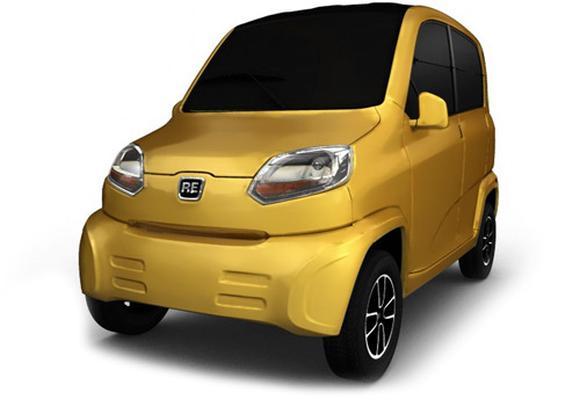
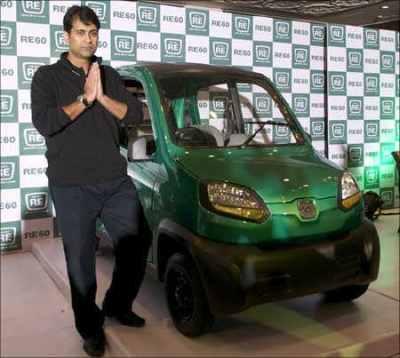
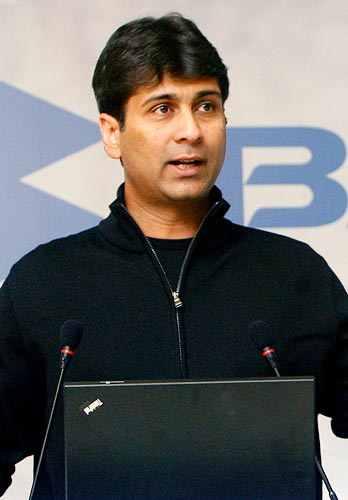

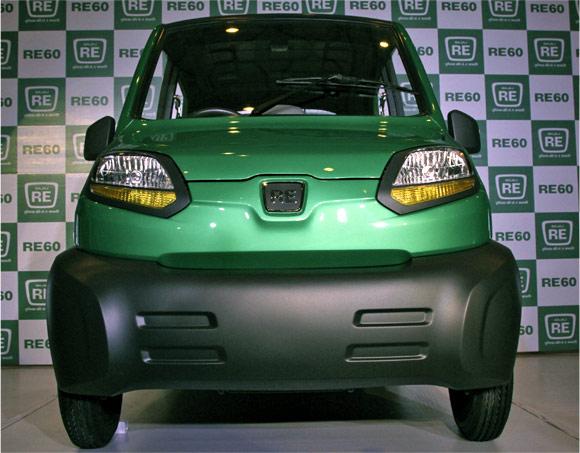
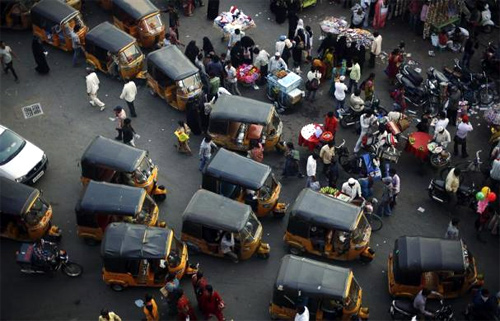

article